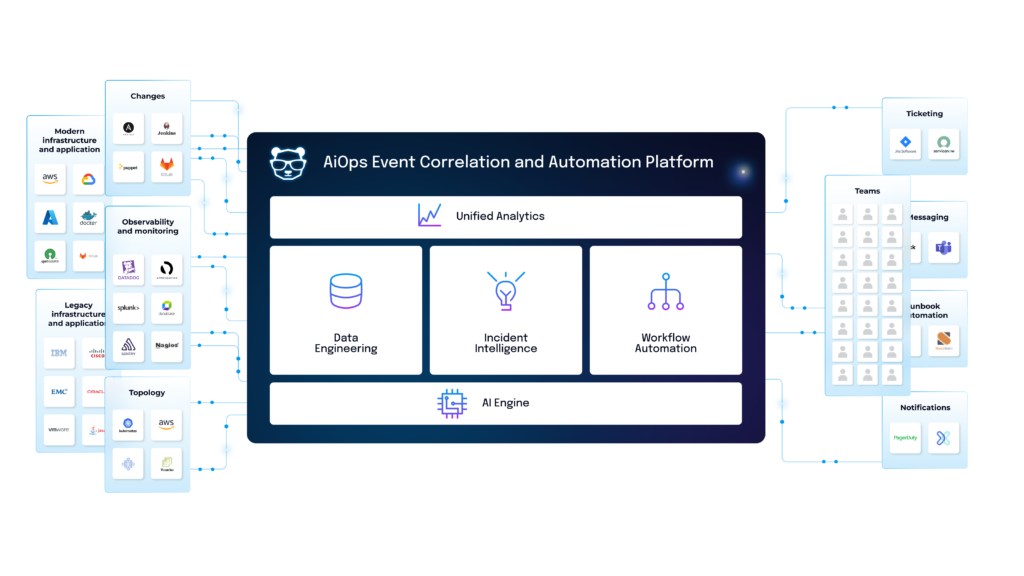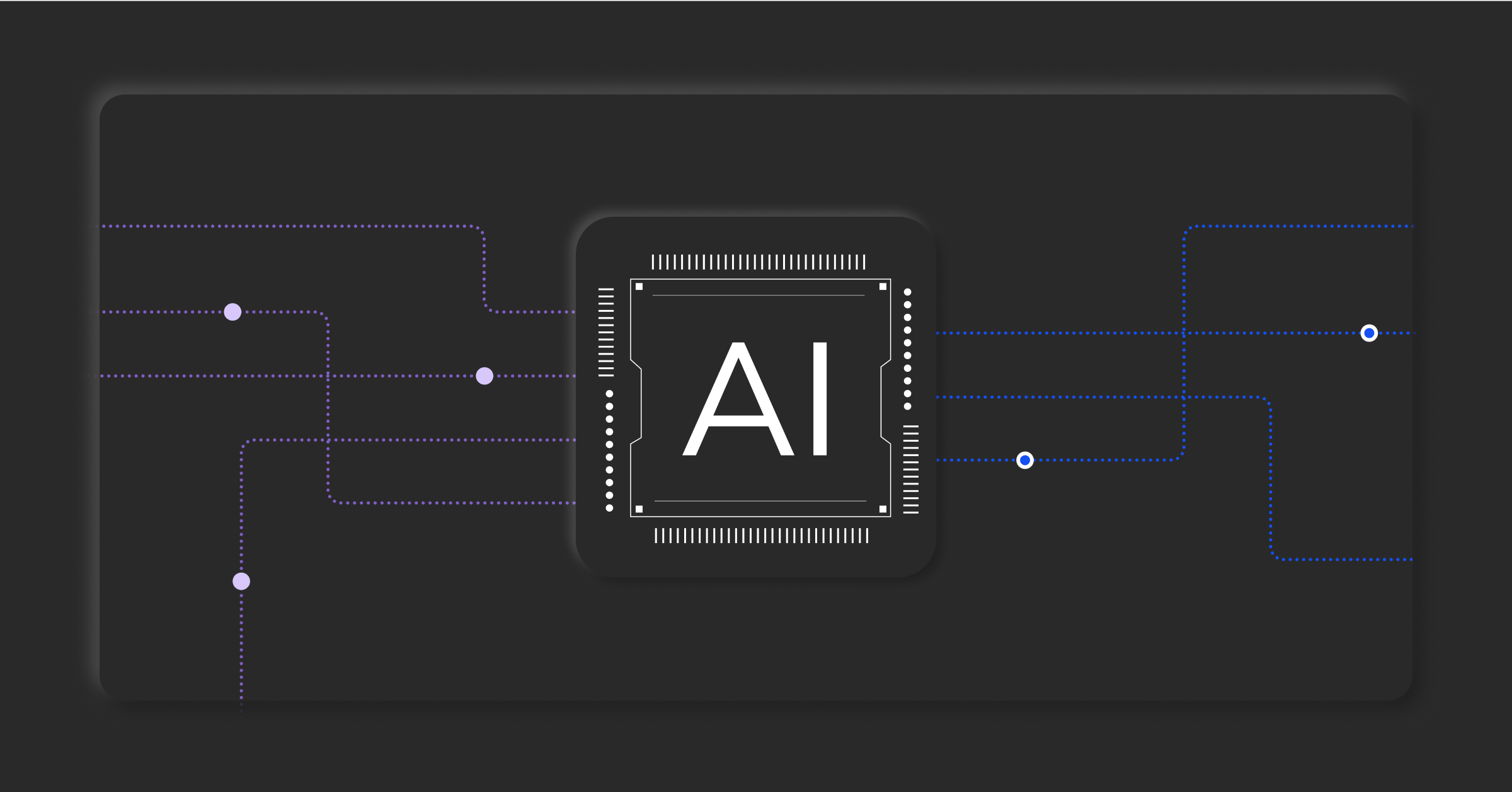Datadog and BigPanda: Better observability and AIOps

Datadog’s modern observability empowers development engineers with full-stack visibility, comprehensive instrumentation generation, and proactive alerts to accelerate software development releases and address potential incidents.
While Datadog gives teams end-to-end visibility, it works even better together with AIOps from BigPanda — development teams gain insights into outside application dependencies and reliance on other systems. AIOps also grants devs automatic access to feedback from the end-user when something isn’t working as expected. Let’s examine these limitations and see how integrating Datadog with BigPanda’s AIOps platform helps to alleviate them for more actionable incidents.
AIOps transforms end-to-end stack visibility into application services insights
BigPanda ingests Datadog event signals and Service Map data and correlates them with alerts and topology from other systems to gain valuable insights and awareness into the health of application services.
Using AI-driven event correlation and cross-domain enrichment, BigPanda understands the impact of Datadog alerts on outside dependencies so incidents that affect service availability and user experience can be prioritized and triaged using automated workflows.
BigPanda Generative AI reveals root-cause changes and incident impact across IT systems
Observability tools like Datadog have feature-rich, real-time topology across the full-stack systems they are monitoring. However, this capability doesn’t incorporate change data into its root cause analysis. Because of this, expert L2/L3 users need eyes on glass to wait for deviations in performance to identify probable root cause of an incident. These experts are then focused on monitoring rather than higher-value problem-solving and development activities.
BigPanda augments Datadog’s root cause anomalies capability by using Generative AI to enrich Datadog events and Service Map with third-party event data, change data, CI/CD, CMDB, and external service maps. Users automatically and reliably receive key incident analysis, incident impact, and probable root cause change in natural language. With this integration, Datadog users can save up to 10 minutes per incident by sharing easy-to-understand summaries within Datadog dashboards and event feeds that reduce escalations and produce fewer ITSM tickets.
Reduce engineering toil by automating incident workflows intelligently using AIOps
Datadog provides essential visibility for applications and services. However, signals fired from different components of infrastructure and monitoring within Datadog can lead to either overalerting — which leads to alert fatigue and toil — or underalerting, which means a problem isn’t detected before users report it.
BigPanda ingests Datadog’s alerts and Service Maps and uses AI to enrich them with third-party alerts and descriptive metadata from other system dependencies to identify actionable alerts and important incidents from noise. Our customers reduce the amount of L2/L3 toil by automating lower-level triage activities based on their priority by sending context-rich incident data to either tiered support models or decentralized response teams.

BigPanda and Datadog: Monitoring alerts made actionable with AIOps
Datadog and BigPanda allow users to turn end-to-end visibility into insights and awareness of the health of application services. BigPanda’s AIOps Incident Intelligence and Automation platform ingests Datadog alerts and Service Maps and correlates them with outside data to gain valuable insights and awareness of customer-impacting incidents that need to be prioritized and triaged using automation.
Get started with the Datadog BigPanda integration
Increase the value of your Datadog investment by integrating with BigPanda’s domain-agnostic AIOps platform. BigPanda lets you gain visibility across complex IT stacks, create actionable alerts, and reduce ITOps workload with seamless incident management.
BigPanda is available to Datadog customers through the Datadog Marketplace. Once you’ve set up a BigPanda account, you can use the BigPanda integration to automatically correlate and analyze Datadog alerts. The integration also sends context-rich events back to Datadog so you can visualize BigPanda’s assessment of an incident’s probable root cause alongside monitoring data from across your stack and work to resolve incidents faster than ever.



